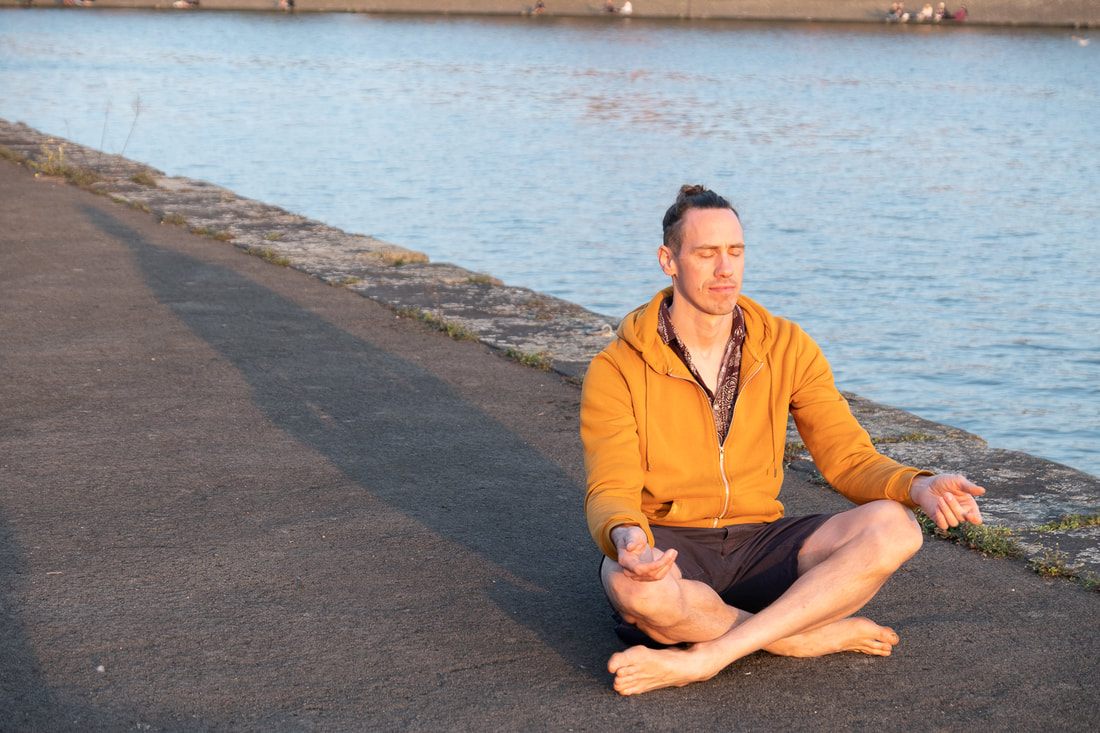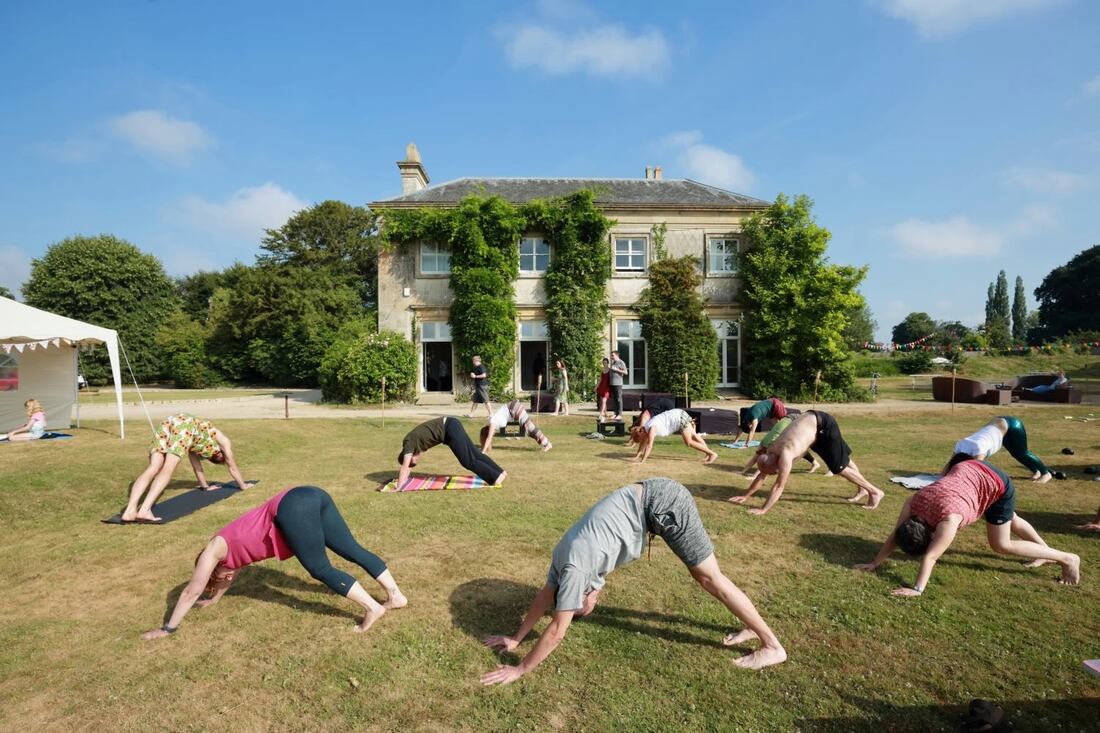We all get wobbles. Life is full of challenges and we sometimes feel anxious, worried, frustrated, sad, depressed or even overwhelmed.
When this happens what often happens that makes it worse? and more importantly what could you do to help yourself?
When this happens what often happens that makes it worse? and more importantly what could you do to help yourself?
Vicious Cycles
Well we often make things worse through panic thinking. We imagine all sorts of terrible things that might happen, or that 'did' happen (but probably didn't happen the way we imagined). We compare ourselves, or our experience with the ideal image of who / what 'should' be. In doing this we suffer and it can be a vicious cycle of thinking and then amplifying the feeling, then amplifying the thinking... until eventually we burn out.
Grounding
A better way is to practice something called grounding. If we were in a storm the safest thing to do is get low to the ground. When people have a panic attack or feel unwell it's often a good idea to ask them to sit or lie on the ground, so they don't fall over and hurt themselves. These are analogies of a set of emotional techniques that help us to feel more safe and stabilize our emotional wobbles. I'll name a few here, which I use regularly.
1. Deep breathing
The first is simple - focus on long, slow outbreaths. Science has shown s that this down regulates the nervous system helping us to feel calm. The important thing is long, slow and smooth breathing, with small gaps. Slowing down the breath slows down the mind.
If you want a structure to follow you can look up box breathing or 7/11 breath or 4-7-8 breathing. I also like ocean breath and sighing with sound. Try them all and pick one. They all share the same quality - slower, smoother, deeper breathing, with pauses, primarily focused on the out breath.
2. Describing things according to the senses
A good way to interrupt thought is to put our attention into our senses. I recently showed a way to do this when working for Marie Curie, to help people grieving. I use this when I work with people who are panicking. Slow down the breath and name 5 things you see, listen for 4 distinct sounds, smell 3 things, touch 2 things with your hands and finally bring the attention inside to feel one inner sensation/location, like the heartbeat. This doesn't solve the external situation, but describing or being with the senses slows the mind and body down and regulate the nervous system, whilst also interrupting any negative thoughts. Now you can think more clearly.
Well we often make things worse through panic thinking. We imagine all sorts of terrible things that might happen, or that 'did' happen (but probably didn't happen the way we imagined). We compare ourselves, or our experience with the ideal image of who / what 'should' be. In doing this we suffer and it can be a vicious cycle of thinking and then amplifying the feeling, then amplifying the thinking... until eventually we burn out.
Grounding
A better way is to practice something called grounding. If we were in a storm the safest thing to do is get low to the ground. When people have a panic attack or feel unwell it's often a good idea to ask them to sit or lie on the ground, so they don't fall over and hurt themselves. These are analogies of a set of emotional techniques that help us to feel more safe and stabilize our emotional wobbles. I'll name a few here, which I use regularly.
1. Deep breathing
The first is simple - focus on long, slow outbreaths. Science has shown s that this down regulates the nervous system helping us to feel calm. The important thing is long, slow and smooth breathing, with small gaps. Slowing down the breath slows down the mind.
If you want a structure to follow you can look up box breathing or 7/11 breath or 4-7-8 breathing. I also like ocean breath and sighing with sound. Try them all and pick one. They all share the same quality - slower, smoother, deeper breathing, with pauses, primarily focused on the out breath.
2. Describing things according to the senses
A good way to interrupt thought is to put our attention into our senses. I recently showed a way to do this when working for Marie Curie, to help people grieving. I use this when I work with people who are panicking. Slow down the breath and name 5 things you see, listen for 4 distinct sounds, smell 3 things, touch 2 things with your hands and finally bring the attention inside to feel one inner sensation/location, like the heartbeat. This doesn't solve the external situation, but describing or being with the senses slows the mind and body down and regulate the nervous system, whilst also interrupting any negative thoughts. Now you can think more clearly.
4. Meditation
This is a practice of the above - exploring our senses, but with a couple of extra layers. First we observe things for longer, and with a relaxed and relatively still posture, secondly we move closer and closer to the experience, with full allowing, acceptance and curosity, until there is no separation between I 'the observer' and that which is being observed. We become the body and let everything flow through us. This deep state of being can take time to cultivate and the key to it is non-striving, or allowing. If there is resistance, that's ok - be the resistance, inhabit it and allow it fully. The more curiosity we can practice the better, whilst also not reacting. This can cultivate a wonderful sense of openness and trust, gradually, over time. This is not a quick fix.
5. Express it, talk to it, move it!
This final tip might seem a bit odd, but for me it is part of my practice of re-parenting, fooling, parts work and self-love. Imagine these wobbles are parts of you popping up to protect you. They want listening to and so it's important to give them some space to express them. There are many ways you do this:
This final one often involves movement. They say action is the antidote to anxiety - which I find to often be true. Below is a picture of practicing a bit of Yoga in the sunshine. A great way to step out of our wobbles is to MOVE THE BODY!
This is a practice of the above - exploring our senses, but with a couple of extra layers. First we observe things for longer, and with a relaxed and relatively still posture, secondly we move closer and closer to the experience, with full allowing, acceptance and curosity, until there is no separation between I 'the observer' and that which is being observed. We become the body and let everything flow through us. This deep state of being can take time to cultivate and the key to it is non-striving, or allowing. If there is resistance, that's ok - be the resistance, inhabit it and allow it fully. The more curiosity we can practice the better, whilst also not reacting. This can cultivate a wonderful sense of openness and trust, gradually, over time. This is not a quick fix.
5. Express it, talk to it, move it!
This final tip might seem a bit odd, but for me it is part of my practice of re-parenting, fooling, parts work and self-love. Imagine these wobbles are parts of you popping up to protect you. They want listening to and so it's important to give them some space to express them. There are many ways you do this:
- Journaling
- Playing 'as them' for a few minutes (eg. be the grumpy part and let yourself complain)
- Singing or dancing the emotion -bring it into voice or movement (music is a helpful aid here)
- Bring love to this part by talking to it in a loving way - this involves acknowledging it, asking what it needs and giving it some reassurance. I find a loving chest rub is helpful here.
This final one often involves movement. They say action is the antidote to anxiety - which I find to often be true. Below is a picture of practicing a bit of Yoga in the sunshine. A great way to step out of our wobbles is to MOVE THE BODY!
When to use these exercises
Personally I use these grounding exercises regularly, often before I'm even wobbled. It can prepare us for the wobble and help us sail through challenges. I talk about them and encourage others, They can really allow us to think and act with more calm and clarity, which often makes our problems much more manageable. Try them yourself and let me know how it goes!
If you need help to practice them come and join a group or work 1:1 with me or hire me to teach them in your workplace. Big Love! Neil
Personally I use these grounding exercises regularly, often before I'm even wobbled. It can prepare us for the wobble and help us sail through challenges. I talk about them and encourage others, They can really allow us to think and act with more calm and clarity, which often makes our problems much more manageable. Try them yourself and let me know how it goes!
If you need help to practice them come and join a group or work 1:1 with me or hire me to teach them in your workplace. Big Love! Neil

